
During the Great Depression, shanty towns and beach shack communities sprang up all along the NSW coast as poor people tried to eke out a living hunting rabbits and catching fish.
Multimillion-dollar holiday homes and sea-changers have replaced these humble settlements nearly everywhere, with one notable exception close to Sydney.
Nestled in beach valleys at Little Garie, Era and Burning Palms along the coast track of the Royal National Park are relics of this bygone era – 138 private cabins made from building materials that could be carried or scavenged. They have been saved by isolation, heritage listings, and the tenacity of families determined to preserve a way of life.
The communities that inhabit the beach shacks – clusters of the descendants of the original owners who use them as weekenders rather than homes – once again find themselves at a crossroads as they await word from the NSW government about their future.
The three communities operate under a licence from National Parks and Wildlife Service, which is due to expire in March 2027.
After much uncertainty, NSW Environment Minister Penny Sharpe recently indicated she was willing to consider the possibility of a new licence.
“The cabins in the Royal National Park are licensed until 2027,” Sharpe says. “The NSW National Parks and Wildlife Service is working with the cabin communities regarding licensing agreements beyond that date.”
The relationship between the communities and the government has not always been a happy one.
Helen Voysey, 71, the former president of the RNP Coastal Cabins Protection League, says from the 1970s to the 1990s NPWS was determined to phase out the anomaly of having private cabins on public land.
“For about 20 years, when someone died, the shack would be demolished,” Voysey says.
“In the 1990s, thankfully, the National Trust came on board and said, ‘you have a significant heritage here, and we don’t want any more of these shacks to be destroyed’.”
In total, it’s believed NPWS demolished 59 shacks across the three beaches.
It is a fate that nearly befell Kerry McKenzie’s family in the 1990s. Her husband Gary’s grandparents were the original owners of a shack at Little Garie and, when they died, the family had to hand it back to NPWS.
“The shack in front of us was demolished, we were the next on the list, and then the moratorium came in,” says McKenzie, 68.
While the building was spared, the family still had to leave. McKenzie recalls packing up the shack, and sharing their furniture and other household contents with the other shack owners.
“Everybody came in and took what they wanted; they took the table, the cutlery, the saucepans, and everything went out through all the valley,” McKenzie says.
“Our shack went to rack and ruin, but we went to politicians and got it back eventually. The [people in the] valley then brought back all the things that they had taken from our shack to help us along the way again, which was wonderful.”
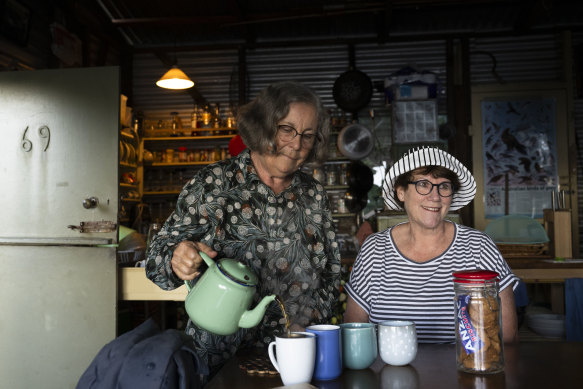
Helen Voysey in her shack at Era, pouring tea for Burning Palms shack owner Jocelyn Jones.Credit: Janie Barrett
In the 2000s, things came to a head. Unable to agree on terms for a new licence, the shack communities took NPWS to the Land and Environment Court. Voysey says they agreed new terms in mediation, including to make a joint submission for a state heritage listing that included not just the built structures but the communities as well.
The licence for Little Garie, Era and Burning Palms signed in 2006 is the one that will expire in just under three years. There are also about 55 cabins at Bulgo, near Otford, which are managed separately.
The shack owners are unsure what the government has in mind, only that so far they have not been invited to participate in its design, and there is some concern that NPWS will “do its own thing” and present it as a fait accompli.
How the communities joined the park
The area is originally Dharawal land, and its proximity to Sydney meant it was colonised early. In 1879, the Royal National Park was established – called simply the National Park until Queen Elizabeth II visited in 1954. It is believed to be the second-oldest national park in the world, after Yellowstone in the United States.
The park stopped at Garie Beach, and the strip of land to the south where the shack communities are located was freehold land, used for grazing horses and cattle.
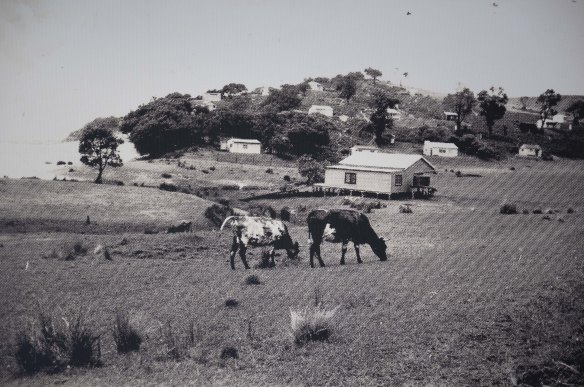
An old photo of Era back when it was farmland.
Era and the other valleys started to be settled in the early 20th century, but this trend accelerated during the Great Depression and World War II. Lynne Ambler, 75, whose father built a shack at Era at age 17, says the owner encouraged people to build homes.
“He came around on his horse every Sunday to collect the rent, and people gave him beers as well,” Ambler says. “By the time he got to some of the last shacks, people could actually convince him he’d already been there.”
Voysey’s father was the first president of the protection league when the land was put up for sale in the 1940s. He and the other shack owners saw an ad in the newspaper for an auction of the last remaining coastal land close to Sydney in this part of NSW.
The shack owners and bushwalkers successfully rallied to save it from development, calling on the government to resume the land and incorporate it into the national park. The foundational paperwork states that the shack owners still own their structures.
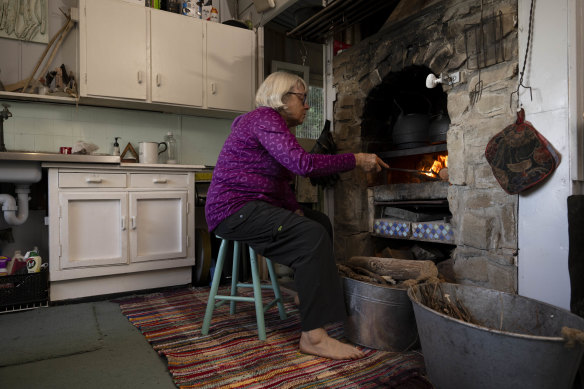
Lynne Ambler in the shack her father built at Era.Credit: Janie Barrett
By this point, the shacks were mainly used for recreation, either by the original owners and their descendants, or newcomers since the shacks could be bought and sold freely. That ended in 1966, when the national park trust was absorbed by NPWS and arrangements moved to a licensing system.
The fact that everything had to be carried several kilometres along a bush track meant the “make do” ethos of the early days continued. In the 1940s and earlier, some homes were built from stone brought in by horse and cart from a nearby quarry. Now families carried in lightweight materials like fibro and aluminium, used materials that washed up from a shipwreck, and saved their empty beer bottles to build retaining walls.
Jocelyn Jones, 65, who shares a Burning Palms shack with up to 66 relatives, has been coming down since she was old enough to sit on top of a pack of nappies in her father’s Paddy Pallin backpack and poke her head out the top.
She believes her childhood experiences taught her resilience, and she sees that with her own children too.
“We learnt about kero[sene] fridges, that you didn’t need electricity, there was no such thing at Burning Palms, and we were very proud of that fact,” Jones says. “You contributed, you always carried more than you possibly thought you would ever be able to carry down the hill.”
Ken Holloway, 72, whose family shack is on the northern headland at Era looking down on the beach, grew up in Greenacre and would do extra chores to ensure the family could get away to Era on the weekend.
“We used to come on a Friday night, you’d have a torch each and your backpack, and you’d come down the track, and the smells would be completely different,” Holloway says. “You’d get here and hear the roar of the ocean and couldn’t wait to wake up early in the morning and go for a surf, so it just became a way of life after that.”
His daughter, Georgia Holloway, 29, says she grew up playing with siblings, cousins and friends at Era with freedom she could only dream of back home in Bulli, and her contemporaries still visit regularly.
“It is a place for family and also a location that I associate with a lot of calm feelings because there’s a community and the natural setting,” she says.
Keen not to take it for granted, Georgia is now on the protection league committee.
Ambler uses the shack her father built at the back of Era Valley, and her brother Greg Barlow, 73, has one nearby. The siblings recall a happy childhood flying kites, racing homemade carts, and running up the mountain.
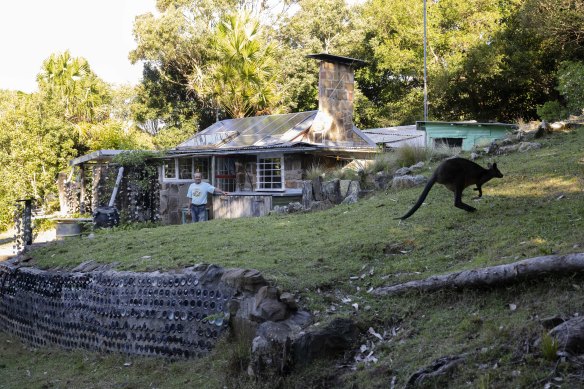
Greg Barlow at his shack at EraCredit: Janie Barrett
“We used to come down every weekend and every holiday for the whole holidays, and we would just run free,” Ambler recalls. “The only restriction we had is if Mum put a red towel out, we had to come home.”
The communities in those days had connections with artists such as Margaret Olley and photographer Max Dupain.
The National Parks Association of NSW would usually object to anyone having exclusive use of accommodation assets in a national park, but executive officer Gary Dunnett says the organisation is comfortable with the current licensing arrangements for the coastal shacks given they are listed on the NSW state heritage register for their cultural significance.
Dunnett points out that Kosciuszko National Park hosts several privately owned ski resorts in a vastly more complicated arrangement than the beach shack communities.
“If this was a new proposal and someone was proposing to build structures like these shacks from scratch, we’d strongly oppose it,” Dunnett says. “The main thing we want is that they continue to be managed in accordance with the state heritage listing, which is really about maintaining their historic character and not seeing them effectively transformed into classic holiday villages.”
So far, so good. The only visible shift in the past few decades is that most shacks now have solar panels to power electric lighting and appliances such as fridges, though many people still use a kerosene lamp as a back-up, or a primus for cooking. Voysey has repurposed her old kerosene fridge into a cupboard.
Community service
As Surf Life Saving Sydney’s lifesaving co-ordinator for the Royal National Park, Mark Wood oversees the three surf clubs at Garie Beach, Era and Burning Palms.
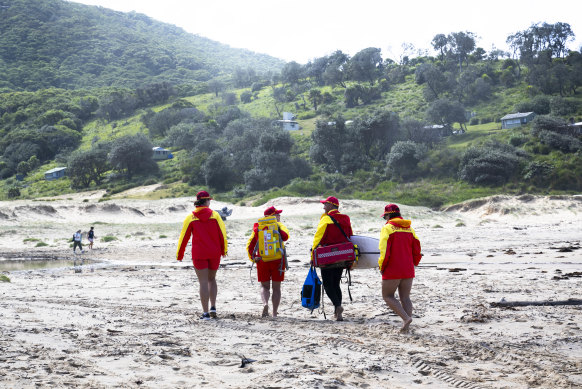
Shack owners on patrol for the surf club finish their last shift of the season.Credit: Janie Barrett
At Garie, some members come from the Little Garie shack community, but most drive in from Sydney. Currently, the club is operating from Wattamolla because the road to Garie is still blocked after a landslide in 2022.
But for Era and Burning Palms, Wood says: “All of our members have come from the shack community and that’s always been the case since the surf club first started in 1938. Most of the patrols are family patrols.”
Loading
Without the shack communities, Wood believes NPWS would have to adopt more paid patrols, or risk people dying.
Jones from Burning Palms says the surf club was always important because you might get 10 to 15 bushwalkers who would sometimes get caught in rips. Now the club is vital because a thousand people a day might cross the sand to get to the Figure Eight Pools on the southern rock platform.
The pools have featured on social media and also in high-profile travel magazines, and Jones says they attract visitors from all over the world, many of whom cannot swim or have no experience in surf.
People visiting Figure Eight Pools are frequently washed across the rocks and need patching up.
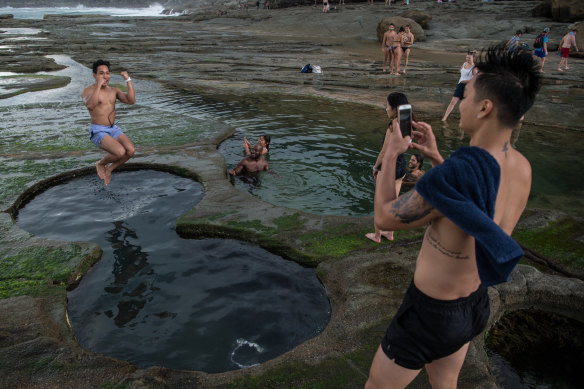
The Figure Eight Pools is a popular destination in the Royal National Park.Credit: Wolter Peeters
“The waves come up unexpectedly and wash right across and of course people are just barrelled because you cannot withstand the pressure of the waves,” Jones says. “They come back around the beach with skin ripped off their arms and legs and backs and everywhere.”
Loading
Many shack owners also speak about their volunteer work in weed management both through Landcare and unofficially, or picking up marine debris and litter. (Though Dunnett points out that weeds follow disturbance, so the need for weed management is increased by the presence of the communities.)
Voysey says the heritage listing recognised the intangible connections of people with place.
“I’ve been coming since I was a baby and now my grandchildren are coming here and doing all the things that we used to do,” she says. “A few weeks ago, my grandson who is 12 said, ‘I really like this place. I’m going to bring my children and my grandchildren here’.”
Get to the heart of what’s happening with climate change and the environment. Sign up for our fortnightly Environment newsletter.









 Add Category
Add Category